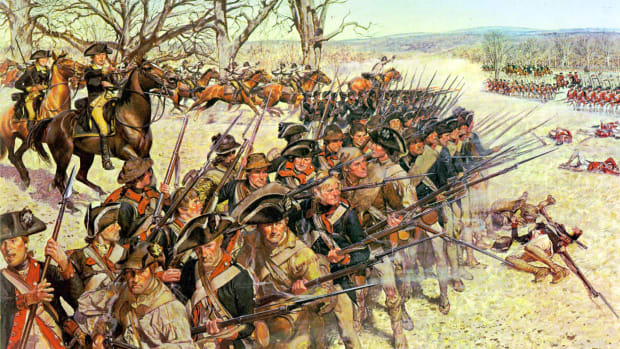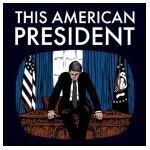Loading...
Cowpens Battle was an engagement during the American Revolutionary War fought on January 17, 1781, between American Colonial forces under Brigadier General Daniel Morgan and British forces under Lieutenant Colonel Sir Banastre Tarleton, as part of the campaign in the Carolinas.
Cowpens Battle
- Daniel Morgan, who had been sent south by Washington, joined Nathanael Greene’s army. Greene decided to send Morgan with a force of militia and cavalry westward. This dividing of his army was risky, but Greene wrote “It makes the most of my inferior force for it compels my adversary to divide his.”
- Tarleton persuaded Cornwallis to let him hunt down and destroy Morgan and the force he commanded.
- Morgan decided to set an ambush for Tarleton at Hannah’s Cowpens, a meadow that was about 500 yards square with a couple of hills nearby. The ground was mainly flat, but it had a gentle slope that hid the American dragoons and shielded the militia from view.
- On January 16, 1781, Morgan’s 1800 men deployed with a group of riflemen in front (in trees), followed by militiamen, then more riflemen. The night before the battle, Morgan told his men “Just hold up your heads, boys! Give them three fires and you will be free. Then when you return home, how the old folks will bless you and the girls will kiss you, for your gallant conduct.”
- The next morning, Tarleton and the British (about 1100 men in all) began marching toward them.
- As the British approached, the riflemen in front picked off many of them, then fell back and joined the second. Then the militiamen fired off two volleys and fell back to the third line. The British were drawn forward.
- As the British came forward, the Americans surrounded them. 110 British and Loyalists were killed, 200 were wounded, and 527 were captured. The Patriots lost only 25 killed and 124 wounded.
- Tarleton escaped. Patriot cavalry commander William Washington chased him, and the two briefly fought one-on-one, but Tarleton shot Washington’s horse and got away. The Patriots also captured many valuable supplies.
- Cornwallis, on hearing about the disaster at Cowpens, wrote “the late affair has almost broke my heart.”
Consequences of King’s Mountain and Cowpens Battle
- Key consequences:
- Cornwallis lost one of his two light infantry units (Ferguson’s). Cornwallis tried to turn his entire army into a giant light unit, which did not work well.
- Cornwallis was practically forced to abandon Charlotte as his base of operations. His supply line to Charleston was now too vulnerable.
- The morale of the Loyalists was crushed.
- The morale of the Patriots was increased. Partisan activity increased in the Carolinas. Cornwallis was now working in almost entirely hostile territory.
- Cowpens caused Cornwallis to lose his temper and go on a long and destructive chase of Morgan
- JAR: “This sudden defeat of a substantial British force stopped British offensive momentum in the south and renewed the spirits of American forces, initiating the campaign that brought the war to an end.”
- Morgan later wrote “I was desirous to have a stroke at Tarleton… & I have given him a devil of a whipping.”
- Together, King’s Mountain and Cowpens helped save the South for the Patriots. It taught Clinton and Cornwallis that conquering the South would not be easy.
Additional Resources About Revolution and Colonies
Cite This Article
"Cowpens Battle" History on the Net© 2000-2024, Salem Media.
April 24, 2024 <https://www.historyonthenet.com/cowpens-battle>
More Citation Information.







